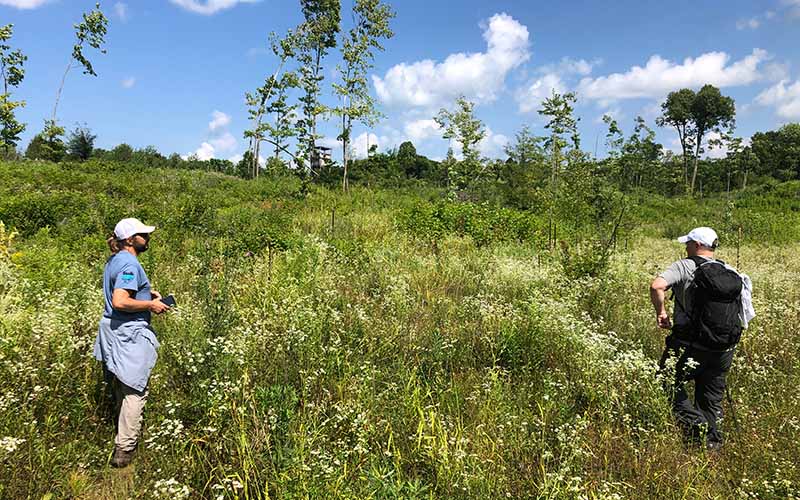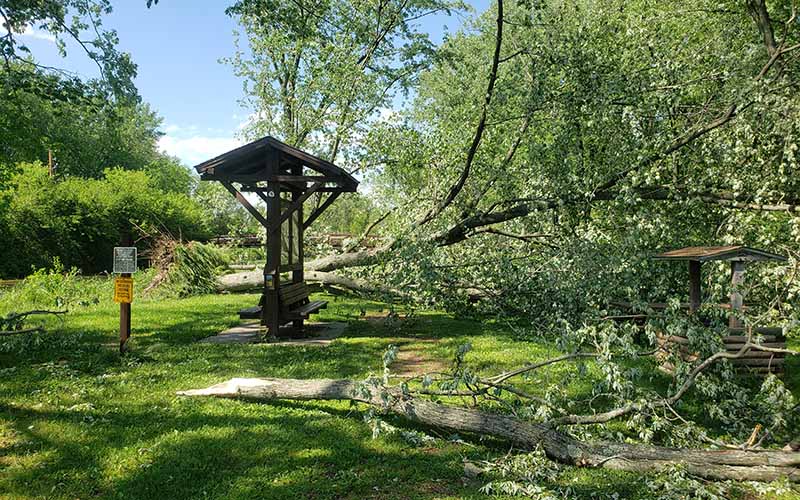Kevin Thusius is the director of land conservation for the Ice Age Trail Alliance.
Who are you and what is your role?
I have been at the Ice Age Trail Alliance for 20 years, nearly my entire professional career. My work involves both acquisition and management of property. In my position, I work on management plans for all properties. I am also on the village board in Cross Plains.
How does climate change impact your work?
I had been thinking about how to incorporate sustainability into my work for the alliance for a long time. It was overwhelming to think about how to make on the ground practical decisions and relate them to climate change. What helped was time and research.
For example, The Nature Conservancy came out with a mapping tool that tells what kind of landscapes will be more resilient in different climates. I had looked at it to see about how to prevent floods and such but the model changed my perspective into thinking about how to manage alliance lands to adapt to future environments. I changed my view from looking at the past and managing for pre-settlement conditions to looking at the future and adapting to conditions we anticipate with climate change.

This change in thinking is a natural progression. The Ice Age Trail is about acknowledging a glacial event that happened so long ago. The eastern part of the state had a mile of ice on it. The melting of the glaciers was natural climate change that had a dramatic impact over relatively short geologic period.
In dealing with climate impacts, another consideration was maintaining the non-partisan nature of the Ice Age Trail Alliance. We promote causes to help the trail. This is where my two roles came together. A huge rain event in August of 2018 in Cross Plains sparked interest in having a sustainability committee at the village level. At a meeting of the board after the event, a woman came and asked to create a sustainability committee. I met her after the meeting and we talked about approaches. Her assertion that “There is not a problem that some thinking and a good Excel file can’t help,” really resonated with me.
Since then, the committee has done some good work in making the village more resilient. We are now looking at a putting in a solar farm. We’ve come a long way in a short period of time. Having something more tangible helped us look at the bigger picture.
What approaches are you considering?
We are seeing the most need for change in the central and northern parts of the state. For example, we hired a forester to write a forest plan for our property in Marathon County, near the Town of Ringle. We are planning for a warmer and drier future in that region. In 50 years, we want the area to have resistant tree species, including a stand with more oak, hemlock and white pine, and less maple, birch, and basswood. We are planning for older growth tree species that can handle the predicted conditions. This will hopefully make the forest more resilient.

How will you connect with your stakeholders?
The alliance membership is really diverse. Some stakeholders are there for conservation and some for recreation. Our outreach will include information on how we are managing landscapes to create more resilient landscapes. We will use interpretive signage to explain our management approaches, like logging, to promote old growth tree species.
What about the future? Do you have hope?
We will continue looking 20 to 50 years into the future and partnering with others to co-manage properties to ensure our management approaches work together. We will continue to extend our partnership network and use tools to promote resilience, including trail related tools developed by The Nature Conservancy, and pull them together using geographical information systems (GIS) to guide our work. While our approach may impact carbon sequestration in the short term, the long-term benefit will be more a resilient landscape.
The views and opinions expressed in this interview are those of the authors and do not represent official policy or position of the University of Wisconsin-Madison or the Wisconsin Initiative on Climate Change Impacts.
For More Information
Kevin Thusius
Director of Land Conservation
Ice Age Trail Alliance
(608) 798-4453
kevin@iceagetrail.org